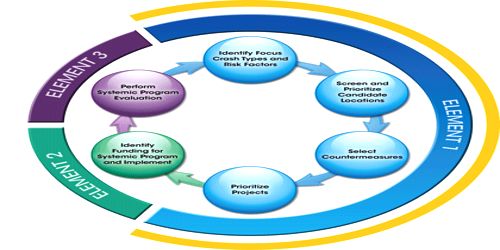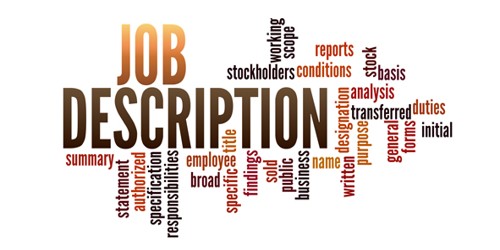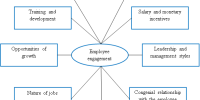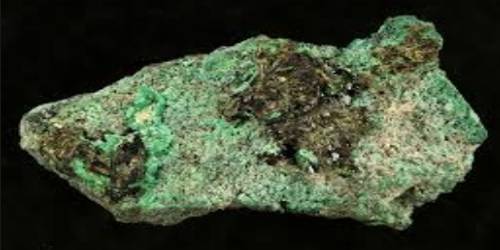Standard Selection Process elements:
The employee selection process usually entails notification or advertising, reviewing, screening, interviewing, testing then selecting the best available candidate.
Collection of Curriculum Vitae (CV)
It is the applicant’s responsibility to send his/her CVs in time to the given address. Lafarge collects CVs through internets, postal Dak, currier and by hand who are coming physically.
Screening/Short listing
After detail study and analysis the CVs are sorted department wise and short listed for call up message. Important aspect that is noticed during sorting is whether the qualification, experience and other details matches with the requirement. The underlying objectives of the initial or preliminary searching are to eliminate obvious misfits from a considerably large number of applicants. It reduces time and cost of actual selection. Initially a list of qualifications and experience is prepared and the HR department alone or in association with the concerned departmental head reviews the lists and sorts out likely acceptable applicants.
In the process of initial screening, generally the eliminatory factors pointing to the unsuitability of an applicant are:
- In adequacy of applicants experience and education.
- Too many jobs of short duration changes of job frequently shows a person with poor records.
- Frequent changes of residence (may be as a result of job change) shows instability in the makeup of the applicant.
- Applicants those with a recent separation or divorce shows instability and under emotional involvement that may hamper the work they would do.
- Long unemployment shows particular information of unwillingness or not desired for employment.
- Application poorly written misspelling, blots erasures, and at places illegible shows less interest.
After the initial screening is done a list of likely acceptable candidates are made. Some time final screening also done by personnel manager in association with the departmental heads.
Reference check
Generally reference imply letter of commendation, which are mainly two types:
- Character references as provided by friends and acquaintance of the applicant.
- From previous employers or teachers, .the process is mainly regular checks which concerned with verification or confirmation of factual information as provided in the application.
Methodology of reference check
There are many methods to check the reference but mostly used are:
- The Mail .This method is used in soliciting opinion of people who cannot be easily accessible on telephone. Though it is economical but suffers from drawbacks like not answering and delayed answer etc.
- The Telephone. This is more useful and advantageous method. It is more popular, quicker, and cheaper than the written quarries through mail. The reliability of such personal contacts is also greater.
- Personal Visit. The personal visit is of still more beneficial than a telephone call. It allows longer conversation and reliability is more. Though it is time consuming and expensive.
One thing is more important while reference checking is that the kind of relationship of the candidates with those whom they refer. It should be carefully determined, considered and weighted while evaluating the opinion expressed. It is often the case that reference with high commendation carries a stigma behind it that the employer wants to get rid of the applicant. It is nothing unusual in the modern business practice.
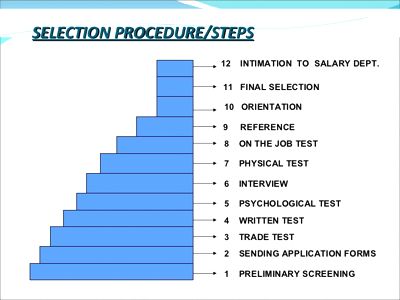
Test
Selection and employment tests are usually administered after the application has been examined and candidate appears to be acceptable, test involves both professional and psychological. The importance of tests is recognized and found more suitable tool for selecting their employees, primarily tests supplement the information already collected though application.
Objective of Test:
The main objectives of the test include:
- Measuring job applicant’s latent abilities, experience, education and suitability to perform assigned job.
- Means of eliminating misfits and failure and thus selecting the right man for right job.
- Tests help improving the personnel selection procedure.
- The test seeks to eliminate the possibility of prejudice or bias on the part of an interviewer for taking selection decisions.
Test contributes greatly to training programs by identifying the weaknesses and deficiencies of individuals.
Types of Test
In broad classification of test, it may be placed in two categories firstly, those tests involving group approach and applicable to many individual at one time. Secondly, those tests with individual approach, which require separate examination for each person being tested. Few of the typical tests in each category are:
- Intelligence test.
- Aptitude test.
- Dexterity test.
- Personality test.
- Interest test.
- Achievement of proficiency test.
In Lafarge IT test is carried out to judge the IT knowledge of the candidates.
Interview
The applicant passed though the screening test and his/her references also having been checked up, he/she is now ready for final interview. It is the last phase of selection process. According to the Scott “An interview is purposeful exchange of ideas, the answering of questions and communication between two or more persons”.
In the process the interviewer also well equipped with a significant amount of factual data about the applicant, the personal history, test scores and references etc.
Interview is considered to be the most important universal method of evaluation and is widely used for effective selection and placement. It is recognized as the “heart” of the employment process. However at the same time the interview is perhaps a highly intricate, complicated and difficult part of the selection procedure.
Types of Interview:
There are four types of interview commonly in use in the process of selection. These are:
- Preliminary Interview. In the preliminary interview the applicant is apprised of the nature of the job terms and condition and the policies of the company. It the candidate after the preliminary interview appears to be likely acceptable, he/she is placed in the short list.
- Structured Interview. The structural interview primarily relates to direct or indirect questioning, questions more or less have been already framed. The question mainly covers work experience, education and career planning.
- The Stress Interview. This type of interview is used to discover and assess some of the very important personality characteristics of the applicant. In brief it helps to find out his/her reaction towards any stress or uncomfortable situation likely to face. It should be remember that, the situation to be created tactfully and carefully to bring out the exact feelings of the candidate.
- Group Interview. This type of interview is used when the numbers of applicants for a given job is large and there is less time available. This type of
- Interview saves time and proves to be economical. However, it should be conducted by an interviewer having well judgment and long experience.
Information Source:
